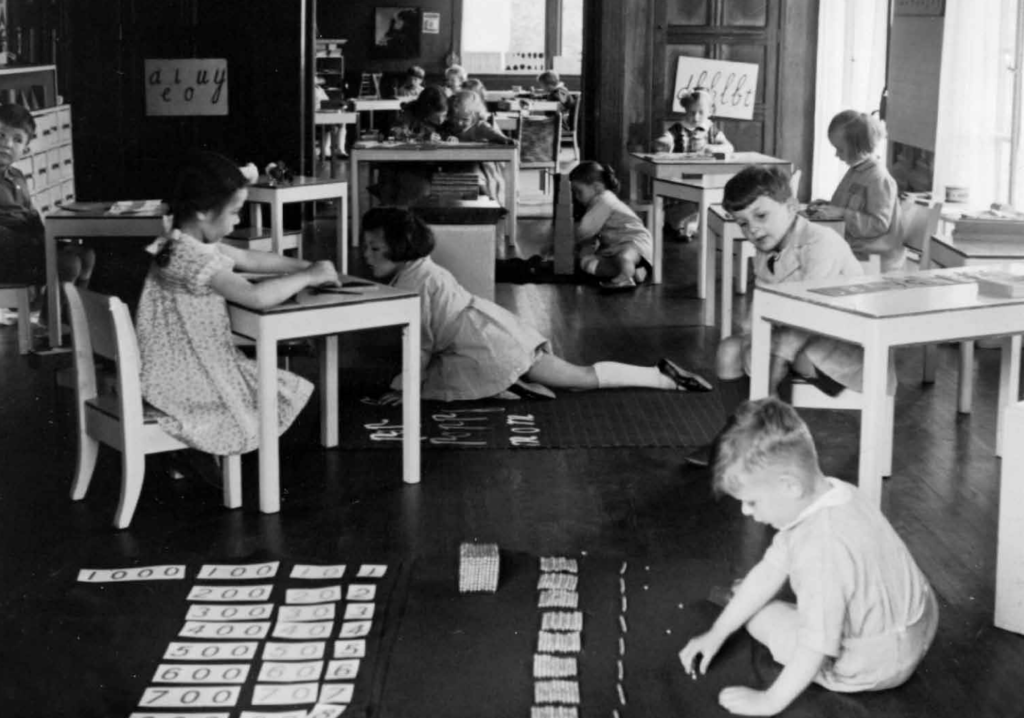
Dr. Maria Montessori, recognized as the founder of the Montessori Method, has made several important contributions to early childhood education. She was born in 1870 in Ancona, Italy, and was her parents’ only child. Due to her father’s job, she received her education in various Italian cities. Despite opposition from her father, teachers, and male classmates, Montessori earned a medical degree with the highest honors from the University of Rome in 1896, becoming the first female doctor in Italian history. Soon after, she was selected to represent Italy at two women’s conferences: one in Berlin in 1896 and another in London in 1900.
In her medical practice, the clinical observations of Maria Montessori led her to analyze how children learn. She concluded that children build themselves based on what they find in their environment. Shifting her focus from the body to the mind, she returned to university in 1901 to study psychology and philosophy. In 1904, she became a professor of anthropology at the University of Rome.

In 1906, she gave up her university chair and medical practice to work with a group of sixty young children of working parents in the San Lorenzo district of Rome. It was there that she founded the first “Children’s House,” or Casa dei Bambini. The Montessori method of education developed there, based on her scientific observations of the children’s ability to absorb knowledge from their surroundings and their unique interest in manipulating materials.

In 1913, Maria Montessori made her first visit to the United States, the same year that Alexander Graham Bell and his wife Mabel founded the Montessori Educational Association at their home in Washington, DC. Among her other strong American supporters were Thomas Edison, Helen Keller, and Margaret Wilson, the daughter of U.S. President Woodrow Wilson. In 1915, she gained worldwide attention with her “glass house” schoolroom exhibit at the Panama-Pacific International Exhibition in San Francisco. During this second visit to the U.S., she addressed the annual conventions of both the National Education Association and the International Kindergarten Union.
In 1919, Dr. Montessori began a series of teacher training courses in London. Three years later, she was appointed a government inspector of schools in Italy, her native country. However, due to her opposition to Mussolini’s fascism, she was forced to leave Italy in 1934. During the Spanish Civil War in 1936, she traveled to Barcelona, Spain, and was rescued by a British cruiser. In 1938, she opened the Montessori Training Centre in Laren, Netherlands, and began founding a series of teacher training courses in India the following year.

In 1940, when India entered World War II, Maria Montessori and her son, Mario Montessori, were interned as enemy aliens. However, she was still permitted to conduct training courses. Later, in 1947, she founded the Montessori Center in London.
Maria Montessori appeared on the Italian 200 lire coin and, throughout the 1990s, on the 1000 lire bill and replaced Marco Polo until Italy adopted the Euro. She was also nominated for the Nobel Peace Prize three times. She was nominated for the Nobel Peace Prize three times: in 1949, 1950, and 1951.


Maria Montessori passed away in Noordwijk, Holland in 1952. However, her work lives on through the Association Montessori Internationale (AMI), which she founded in Amsterdam, Netherlands in 1929. There are also ongoing efforts by those who are called to further her method in schools and homes throughout the world.

